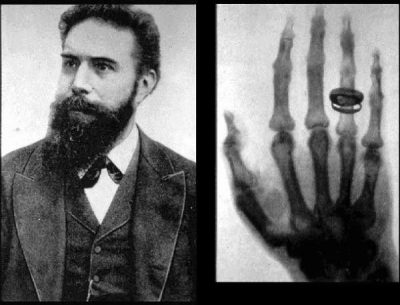
Discovered in 1895 by German physicist Wilhelm Roentgen, X-ray revolutionised the fields of physics and medicine.
An X-ray is a kind of electromagnetic radiation that can travel at the speed of light (299.792 km per second) and pass through most substances including wood, tin foil, books and even concrete blocks that ordinary light cannot penetrate. It was discovered in 1895 by German physicist Wilhelm Roentgen.
Roentgen was experimenting with cathode rays, when he noticed that the fluorescent screen had begun to glow although no light was falling on it. He realised that it was due to an invisible ray. He called it X-ray because he did not really know what it was. Later, his colleague named it Roentgen ray.
The discovery of X-rays revolutionised the fields of physics and medicine.
As it can make internal structures of the body visible, X-rays are used to detect bone fractures, dental cavities, tumours, etc.
The flip side of the X-ray is that it can cause biological, chemical and physical changes in substances. It can damage the living tissues of plants and animals if it is absorbed by them. In human beings, an X-ray overdose may produce cancer, skin burns, a reduction of blood supply and other serious conditions.
Today we have a wide range of medical imaging techniques to create visual representations of the internal body. These include CT (computed tomography) scans, MRI (magnetic resonance imaging) and ultrasound.
Picture Credit : Google




